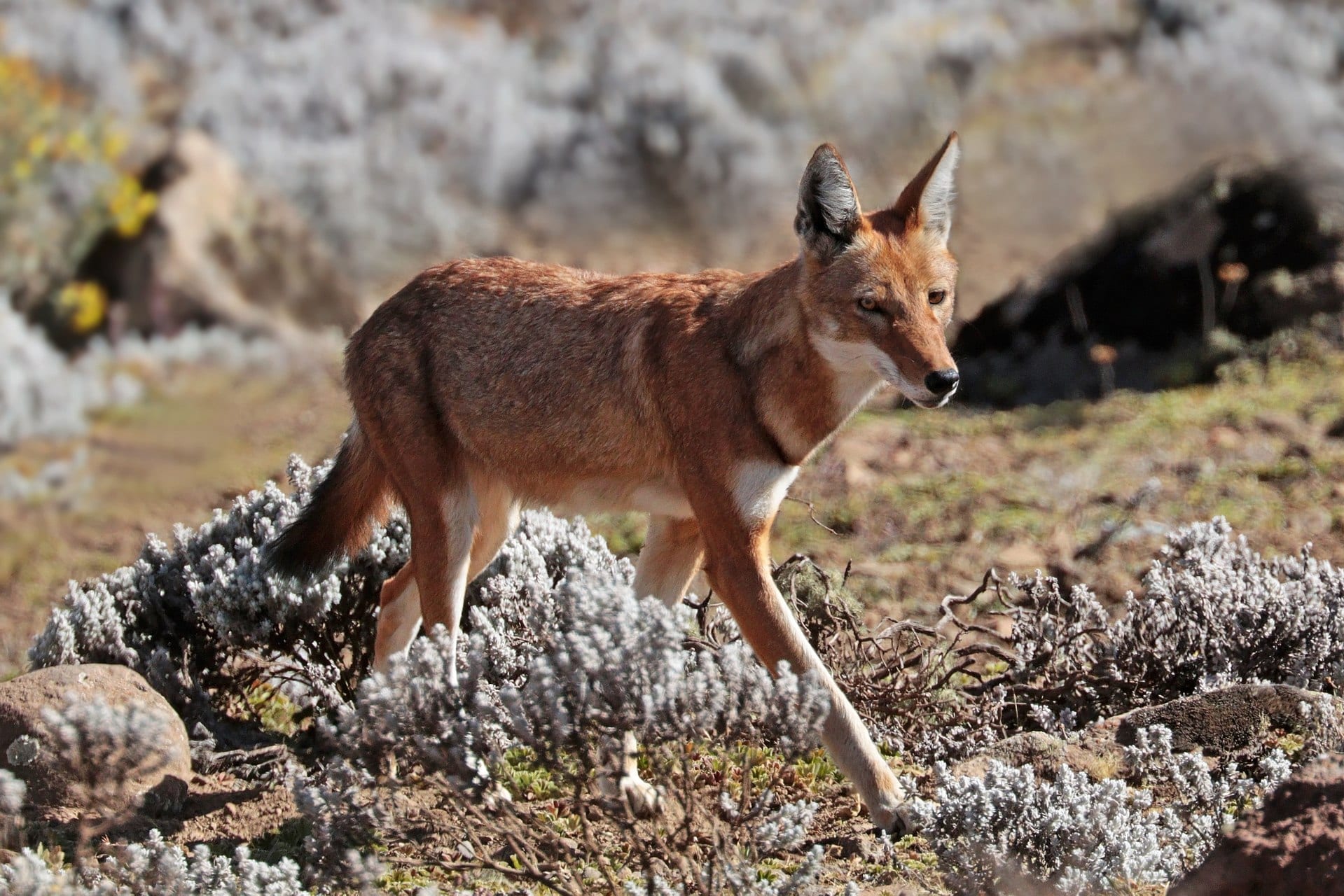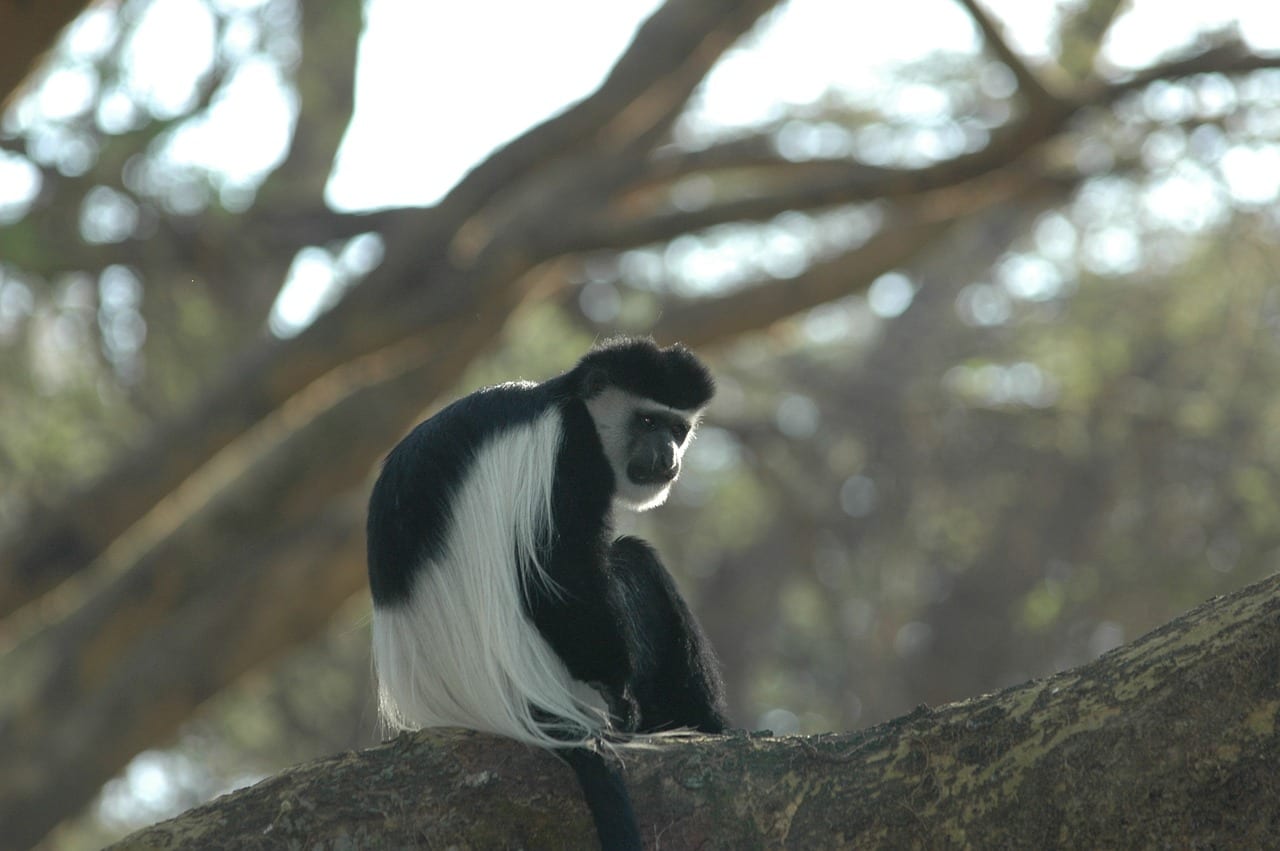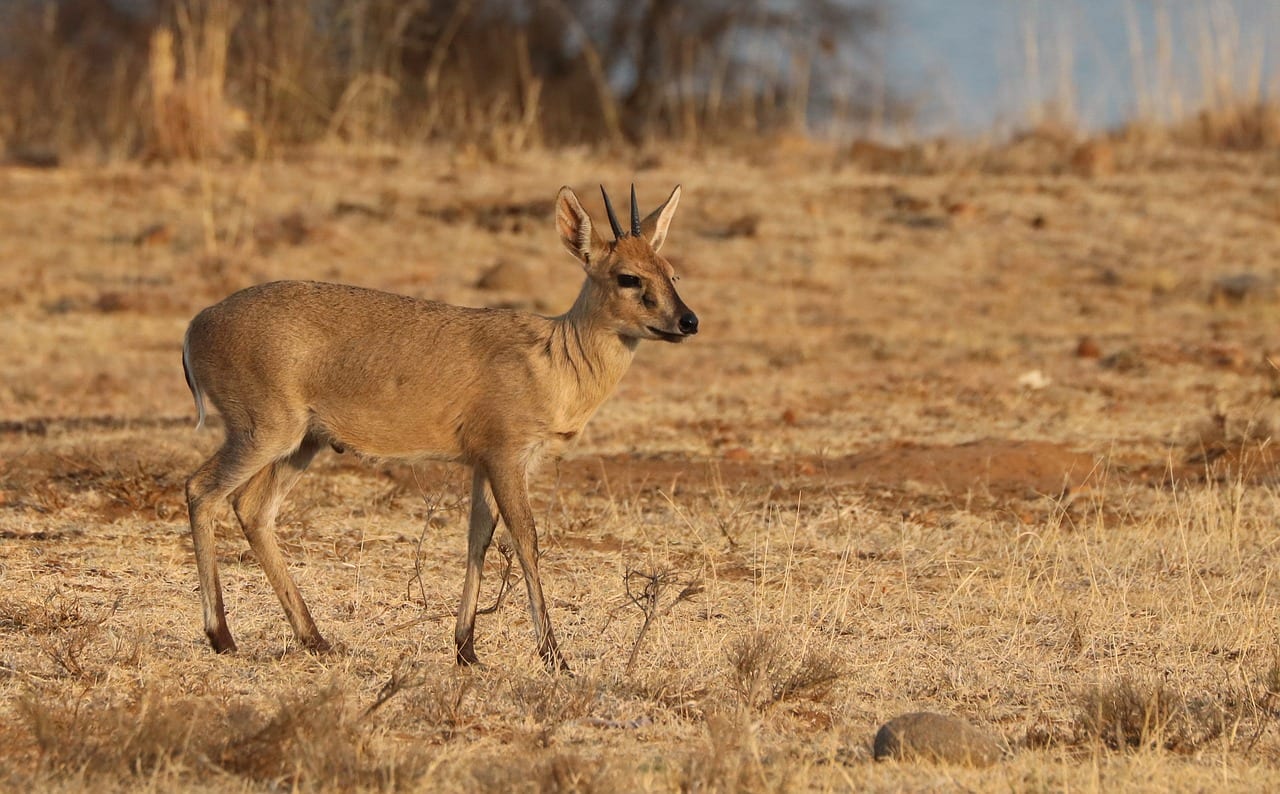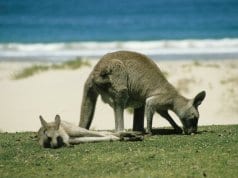Located in a geographical region known as the Ethiopian Highlands, Bale Mountains National Park is one of Africa’s most amazing protected areas. The park was established for a variety of conservation-oriented reasons, but one of the most important factors is its high degree of endemicity.
This simply means that the park is home to a large number of species that live nowhere else on the planet. In fact, Bale Mountains National Park has a higher endemicity level than most other terrestrial parks in the world.
Below, we’ll share some of the most noteworthy animals that call this 530,000-acre park home and provide a few helpful tips for making the most of your visit.
A Park Full of Predators
Several important and interesting predators prowl Bale Mountains National Park.
Predators are common in many African habitats, and Bale Mountains National Park is no exception.

The most noteworthy predator lurking amid the Bale Mountains is undoubtedly the black-maned lion. This species was thought to be extinct until 2016 when a population of roughly 50 individuals was found.
Another important predator that lives in Bale Mountain National Park is the Ethiopian Wolf. The rarest canid (member of the dog family) in the world, approximately 200 individuals live within the park’s borders. Spotted hyenas and servals – medium-sized members of the cat family – also live in and around the park.
Park Primates: The Colobus Monkey
Bale Mountains National Park is home to one resident primate – the colobus monkey.
The unusual colobus monkey is one of the most unusual animals in Bale Mountains National Park. These monkeys – as well as their close relatives – actually have a very reduced thumb, which is little more than a stump.

These monkeys eat a variety of plant-based foods, including fruit, flowers and twigs. However, one of the reasons they’ve managed to survive in places that other primates cannot is their unusual digestive systems. Unlike the digestive systems of most other primates, the colobus monkey has a digestive system more similar to that of a cow.
Colobus monkeys inhabit several different types of habitat. Various types of forests tend to harbor the most individuals, but some also live in grasslands.
Hooved Herbivores
A variety of fascinating herbivores roam the park and play important roles in the local ecology.
Hooved animals are common all over sub-Saharan Africa, and this includes several portions of Bale Mountains National Park. Each species fills a slightly different ecological niche, but they’re all important herbivores. They also serve as prey for many of the park’s large predators.

A few of the most noteworthy hooved animals living in Bale Mountains National Park include the mountain nyala, bushbuck, common duiker and the Bohor reedbuck. Warthogs also live in the park, and they’re actually one of the more commonly seen species.
Be aware that while these animals are all herbivores, they still deserve great respect. If cornered or surprised, they may react defensively. Given their large size (as well as the horns many species sport), they can cause very serious injuries to careless visitors.
Avian Ambassadors
Bale Mountains National Park is home to a wide variety of bird species, many of which are easy to spot.
The bird life in Bale Mountain National Park is quite impressive. In fact, the African Bird Club rates the park as the fourth-best birding sight in all of Africa. Nearly 300 bird species live in the park year-round, and 170 additional species pass through the park during their seasonal migrations.

A few of the most notable park inhabitants include the yellow-fronted parrot, Abyssinian longclaw, and wattled crane. Some of these species, such as the yellow-fronted parrot, are very poorly known by western scientists. Unfortunately, they are under threat of extinction due to habitat destruction.
Sixteen of the birds that inhabit Bale Mountains National Park are endemic to Ethiopia. This includes the Abyssinian catbird, spot-breasted lapwing and the fawn-breasted waxbill, among others. Another fascinating species – the Abyssinian hornbill – is nearly endemic, but it is also found in a few neighboring countries.
Wildlife-Viewing Tips: Seeing All There Is to See
The following tips should help increase the number of animal species you spot during your visit.
Simply visiting Bale Mountains National Park is sure to be the trip of a lifetime. The mountains and views they provide are easily among the most beautiful in the world. But to make the most of your trip, you’ll want to be sure to see as many animals as possible.
Wildlife sightings are obviously never something you can guarantee. However, by employing the suggestions listed below, you’ll surely improve your chances.
- Get up early. Whether you are exploring Bale Mountain National Park via one of the bus services or driving a private car, you must allow for delays (which occur for myriad reasons). Additionally, many animals are more active during the early morning hours than at any other time of day.
- Bring a good pair of binoculars. You’ll likely have the chance to see some animals up close while visiting Bale Mountains National Park, but binoculars will give you to see a much wider variety of species. Many of the park’s grassland species, for example, will tend to keep their distance from people.
- Download a high-quality field guide before your visit. Unlike some other parks, in which even relatively new wildlife-watchers can identify the animals they see, many of the animals in Bale Mountains National Park are challenging to identify. A bird field guide would likely be most useful, but one dedicated to the park’s mammals would also be very helpful.

Share Your Experiences!
Visitors to Bale Mountains National Park often have the chance to see truly incredible animals in their natural habitats, and we’d love to hear about the things our readers have seen! This park is often overshadowed by some of the more popular parks in Africa, so help raise the park’s profile with our readers by sharing your own experiences. Tell us about wildlife you say during your visit and any helpful tips you can share!














![Red Angus Closeup of a beautiful Red Angus cowPhoto by: U.S. Department of Agriculture [pubic domain]https://creativecommons.org/licenses/by/2.0/](https://animals.net/wp-content/uploads/2020/03/Red-Angus-4-100x75.jpg)

